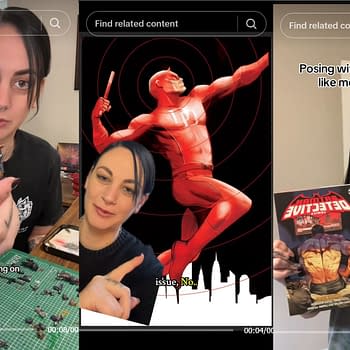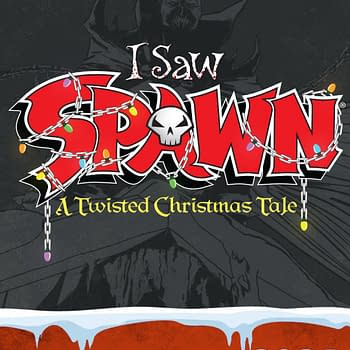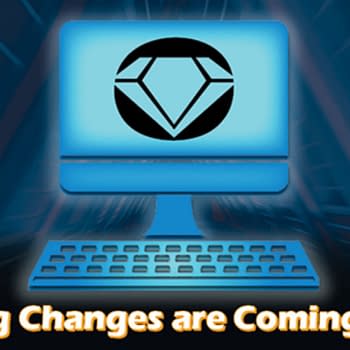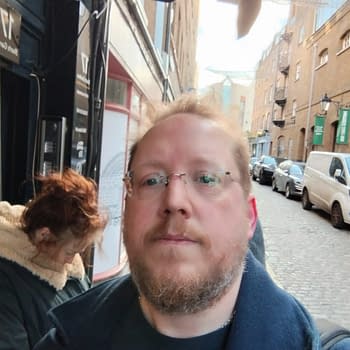Posted in: Comics, Recent Updates | Tagged: Comics, entertainment, joe infurnari, Joshua Hale Fialkov, oni press, the bunker
The Maze-Like Dark Recesses Of The Bunker Are Coming To Light – Joe Infurnari In The Bleeding Cool Interview
This week is an impact zone for the intricate time-travel tale The Bunker, written by Joshua Hale Fialkov and drawn by Joe Infurnari, published by Oni Press. Issue #11 reaches stands this Wednesday, June 3rd, but we also see the arrival of Volume 2 of the trade editions, which read like lavish walks through an alien and disturbing world that too closely resembles our own for comfort.This story, which began with a group of friends discovering a time capsule with ominous messages from their future selves about their role in destroying the world, has come a long way toward making good on that disturbing future promise.

Fialkov and Infurnari have created a story with some of the strongest tension I've seen in current comics, incessantly building and occasionally broken by explosive humor that settles back into uncertainty again. As the plot of The Bunker builds, and characters are increasingly influenced by future versions of themselves or their friends, something is sure to give.
Joe Infurnari talks with us here today about the intense process of creating this story visually and gives us some key insights into what he's hoping to accomplish.
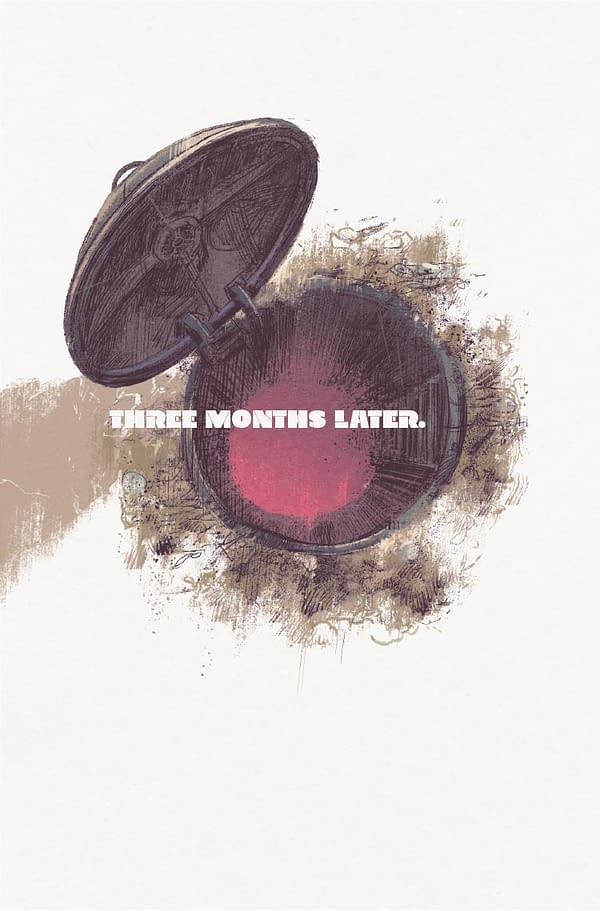
Joe Infurnari: It's been like 2 years now? When Josh and I finished adapting all the digital chapters into what became our first issue with Oni Press, there was already a strong attachment to the characters. I remember feeling some degree of dread as I began work on issue 2; knowing these characters were going to be put through hell.
I had no idea.
So, now I've just finished issue 13 and I'm absolutely gutted by what I've just illustrated. Nothing readers have witnessed up to now can prepare them for what we have in store in the third arc. It is devastating.
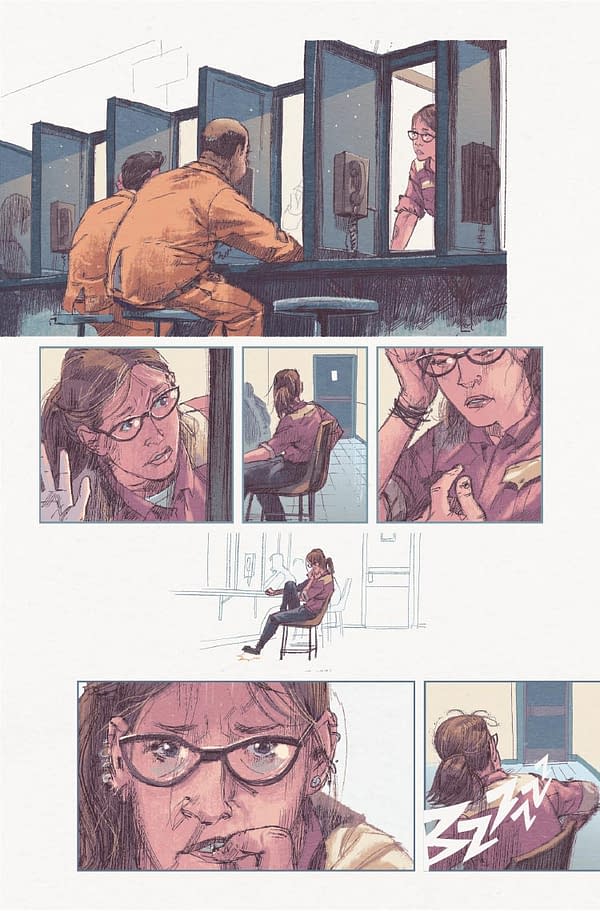
JI: Josh deserves much of the credit in this regard. He paces out the issues expertly; squeezing every drop of suspense out of me as a collaborator and you as the readers! For my part, panel arrangements, tier breaks, POV and compositions are the means I employ to underscore the brain melting tension fans have come to expect.
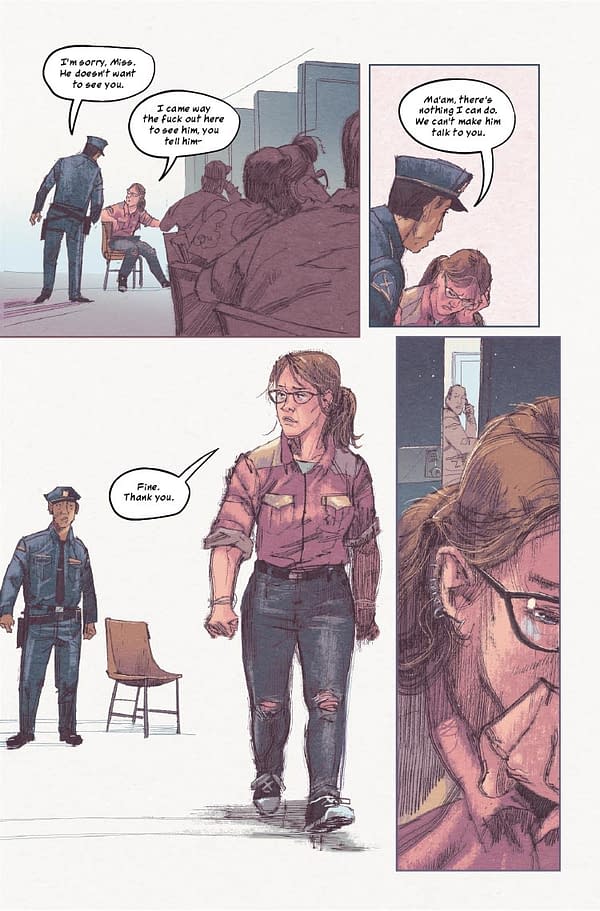
JI: This question dovetails nicely with your last. The abstract arrangement of panels and white space in each page enhances the emotional payload of the story. Sometimes the panel tiers are pulled to the edges of the page to expand the spaces between them, dramatizing the widening breach in their relationship. Other times, the white space isolates a character from their surroundings in an effort to show the dislocation they're experiencing from their reality/friends etc. As I've used it more and more, it's as though the panels, once closely knit and filling the page, have crumbled, separated and fallen apart…just like our five friends and our future.
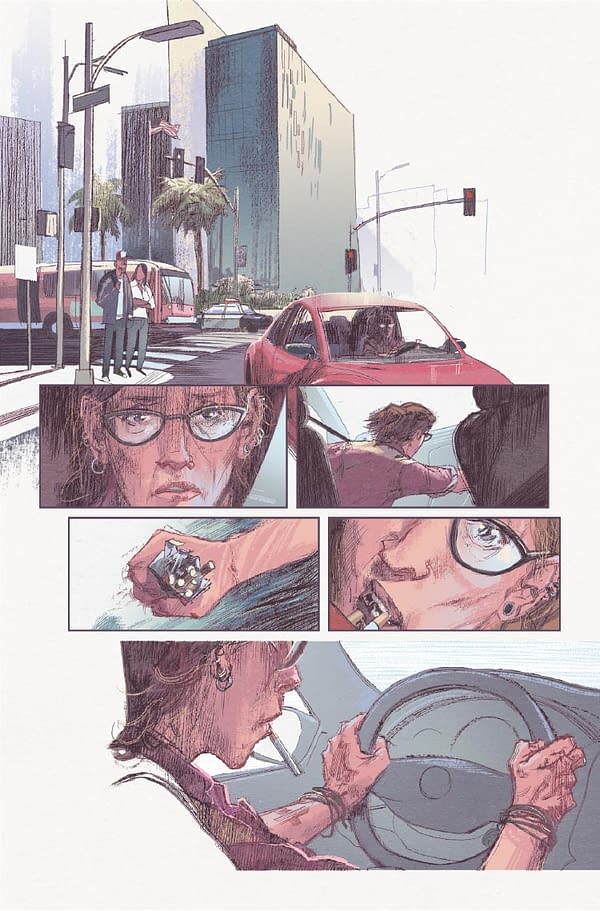
JI: Yes, it's labor intensive, but I really can't complain because I'm able to turn out the pages at a relatively good clip. I believe every story has a unique voice as expressed in the art so this is the look of The Bunker I've come up with. Unlike other series, I've given myself permission to let the art evolve because a big part of this story is about change.
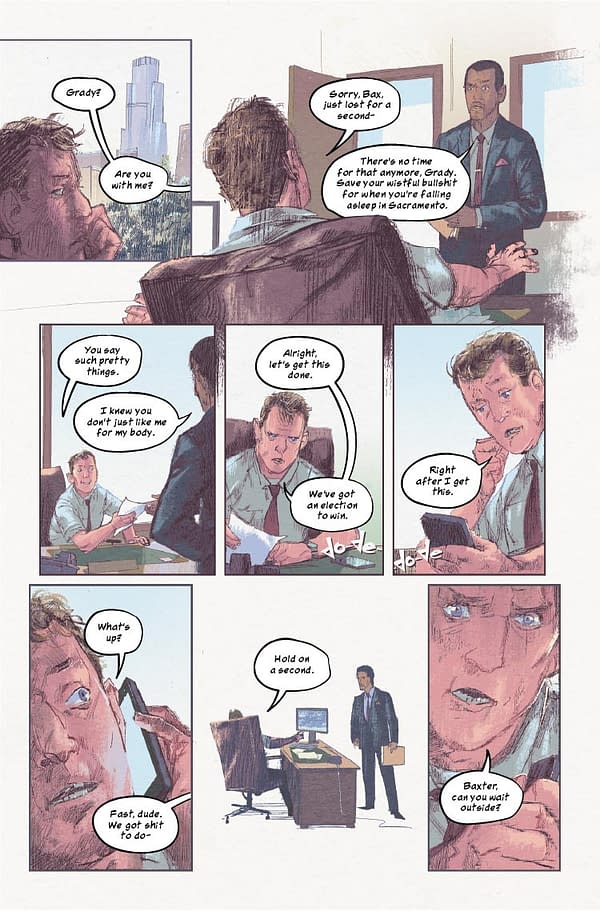
This gets to grips with something I find very true of this book, and have since the beginning: it's all about the quite dark and or weird relationships between these characters. They are just the worst sort of people to be faced with the task of saving anything. Do you think that's true?
JI: I agree. One of my frustrations with them is that if these friends just took care of each other, that would go a long way to preventing the apocalypse. Josh has done a wonderful job of creating these deeply flawed characters that make very human mistakes and inadvertently (but sometimes consciously) hurt each other. Unlike you and I who have all the stress of our daily lives and living with the consequences of our decisions, these characters have the burden of knowing that any of those actions could have devastating outcomes. I believe that they are all still negotiating with that reality. Some have consciously made changes but their motivations often seem corrupted by self interest. That disconnect between trying to break their fate and selfishness is further dramatized when that questionable advice comes from yourself! Can you be trusted?
HMS: Is it a relief to you that this series doesn't subscribe to the paradox idea typical of a lot of sci-fi where you can't meet yourself in other times? It's something that makes this comic unique—we can get these very gritty moments of younger and older selves in contrast. Do you enjoy drawing differently aged versions of these characters and giving them a complete physical time-line?
JI: The Bunker isn't alone in doing this. Back to the Future and Primer are a couple examples, but the thing that's unique about our story is, like you said, the very real difference between contemporary characters and their future selves. There's a very real appeal to listening to the advice of your future self on how to better live your life, but what if that other self wasn't being entirely honest? What if your present goals are not aligned with those of your future self?
As far as drawing older versions of characters, it's an interesting challenge balancing the continuity with enough difference to maintain an ability to distinguish them.
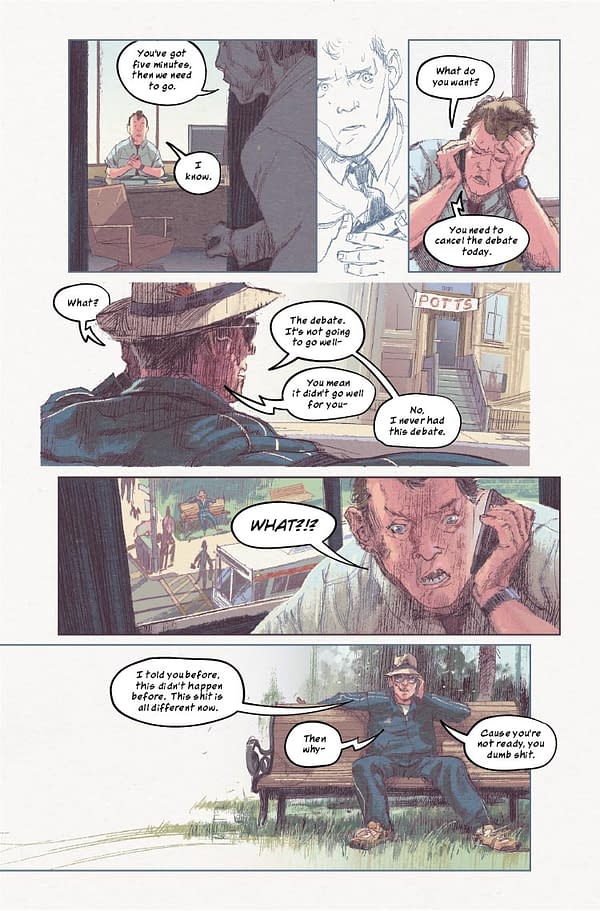
JI: With social media and the Internet, the individual has been given a voice and agency in the global discourse like never before. On top of all our small desires and personal ambitions, we have a new awareness of ourselves in relation to the rest of the world. It has always been true, but technology has brought us all so much closer that it's tangible. And yet, so many of us still continue to operate as though we are at the center of that world. The proliferation of information has also resulted in a lot of speech engineered for easy consumption and repetition (not truth). So how does this newly empowered and connected individual choose to live their life? According to their own wants and desires or more in tune with nature and humanity as a whole?
HMS: You seem very good at drawing vomit and kooky facial expressions. Are these the thrills of being a cartoonist? But, seriously, do you have a strategy for coming up with such a wide range of facial expressions for your characters?
I need to update my business card.
Joe Infurnari:
Your one stop for Up-Chuck and Chuckles!
My strategy is mostly to put myself in the position of these characters and, knowing what I know about them from the story, try to interpret their reactions. Having the characters act in a relatable way is important to me. They should all feel real and who do we know that never makes an odd expression from time to time!?
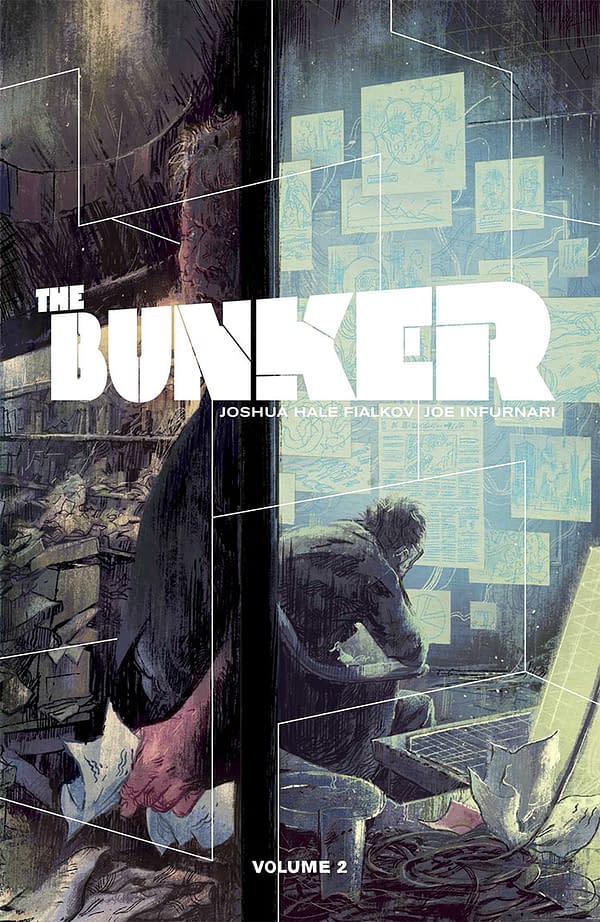
JI: Yeah, we did something special for the design of the trades. When people get their Volume 2's home with their Volume 1, they'll see what we mean. The idea is that as we delve into this story, the interrelationships of these characters become more and more complicated and the dark corners and dangerous recesses in the bunker begin resemble a maze or a trap.
The Bunker #11 is out this Wednesday, June 3rd in comic shops and online, as is the second collected trade paperback of The Bunker (Vol. 2) from Oni Press! You can also find Vol. 1 right here.
The original artwork for both the cover of issue #11 of The Bunker and for the cover of the second trade volume of The Bunker have also just been added to Joe Infurnari's collection of original art for purchase. You can find all that and more right here.










